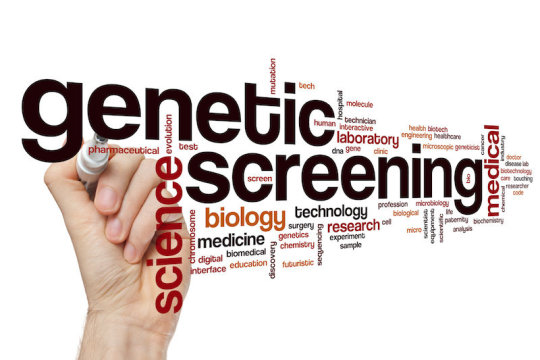[ad_1]
Newborn screening is required in the U.S. and differs slightly depending on which state you live in. For the most part, it’s done before a newborn baby leaves the hospital and includes a blood test that screens for 30-50 serious health problems that usually arise in infancy or childhood, and could hinder normal development.
Compared to current newborn screenings, genomic sequencing is able to detect many more inherited conditions. But there’s also more to the results than just testing positive or negative, and with current commercially available products, those results and any caveats that exist may not be fully explained to the patient. Because of this, there’s a push in the scientific community to determine how genomic sequencing should be implemented as a part of newborn screening before the technology is available on a large scale.
“Out of all the additional information we can provide through genomic sequencing, which could potentially be hundreds of conditions that might develop, what do parents want to learn, and what information would be most appropriate to provide?” said Laura Milko, PhD, associate director of the Program for Precision Medicine in Health Care at the University of North Carolina School of Medicine.
Milko is the first author of a study published in the The Journal of Pediatrics that describes a method of sorting conditions to help categorize the types of results to be disclosed in newborn genomic sequencing. Milko and her colleagues identified several hundred conditions that could be helpful to report to parents. This study was part of a larger UNC School of Medicine project called North Carolina Newborn Exome Sequencing for Universal Screening (NC NEXUS) led by Cynthia M. Powell, MD, and Jonathan S. Berg, MD, PhD.
Current newborn screening standards were developed by the Health Resources Services Administration (HRSA) in their Recommended Uniform Screening Panel. Milko’s study used this standard as a comparison tool in developing their sorting method.
“The conditions that are currently screened for in newborns are those that are more effectively treated if identified early, before symptoms develop,” Milko said. “We developed a sorting system that categorizes information in much the same way.”
Categorizing the information is important, because results from genomic sequencing include a lot of gray area, and some pieces of information are more helpful than others. We have around 20,000 genes and they all play roles in how our bodies grow, develop, and function. Changes in these genes, also called variants, might interfere with the gene’s normal role and could lead to certain health conditions. Genomic sequencing is able to identify a person’s genetic variants. Most of them are harmless or have no known health implications, but some variants might be related to rare genetic conditions. The variants that are pinpointed by genomic sequencing are an indication that a condition could develop, but do not necessarily identify when it will develop, or how severe the condition might be.
“Some diseases are more likely to develop than others,” Milko said. “We look at how many people within the population with that particular gene variant actually end up developing the disease to determine its prevalence. That information goes into determining how useful it might be to include in a newborn’s genomic sequencing report.”
The group also looked at when conditions tend to develop. Current screening standards only recommend tests for conditions that develop during infancy or childhood and require immediate treatment. Genomic sequencing can uncover genetic variants that have an impact throughout a lifetime, but providing results related to conditions that could develop later in life has potential legal and ethical implications. Further, there is debate on how useful information is when no treatment is available for the condition that was identified. Would you want to know that your child has a chance of developing a potentially fatal disease at some point if there was nothing you could do to prevent or treat it?
“There are concerns that learning about a child’s genetic risks might increase parental anxiety and have a negative impact on the family, especially when there is nothing that can be done about it,” said Milko. “There are also issues related to the disclosure of results about adult-onset conditions, since revealing this information about an infant would prevent them from being able to decide whether to learn it when they become an adult.”
Jonathan Berg, MD, PhD, associate professor in the department of genetics and director of the Program for Precision Medicine in Health Care, was the senior author of this study. All of these factors played a role in how Milko and her research team sorted disease indicators into categories. They looked at 822 gene-disease pairs all together, and determined that 466 would be valuable to add to newborn screenings based on current HRSA standards. An additional 245 were identified as potentially useful, and suggested they be offered as additional testing if parents choose to do so.
“We need to start the conversation with physicians, policy makers and parents about how to use this technology,” Berg said. “The sequencing is really the easy part. The difficult part is thinking about what results to provide, how to teach physicians to share those results, and how to educate parents on what that information really means.”
The NC NEXUS study is part of the National Institutes of Health’s (NIH) Newborn Sequencing in Genomic Medicine and Public Health (NSIGHT) program. It was funded by the National Institute of Child Health and Human Development and the National Human Genome Research Institute.
[ad_2]















